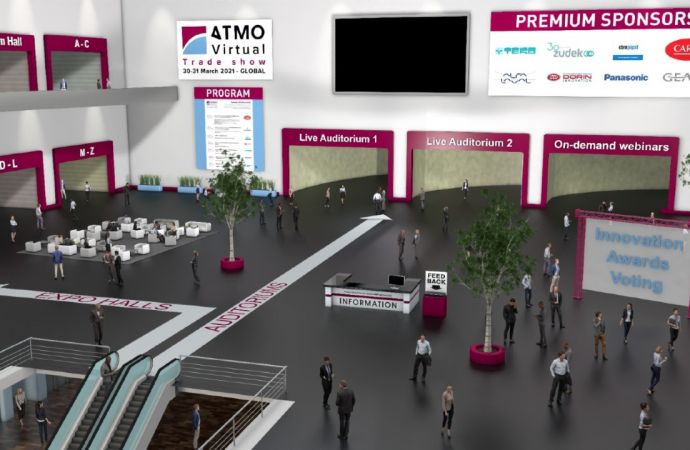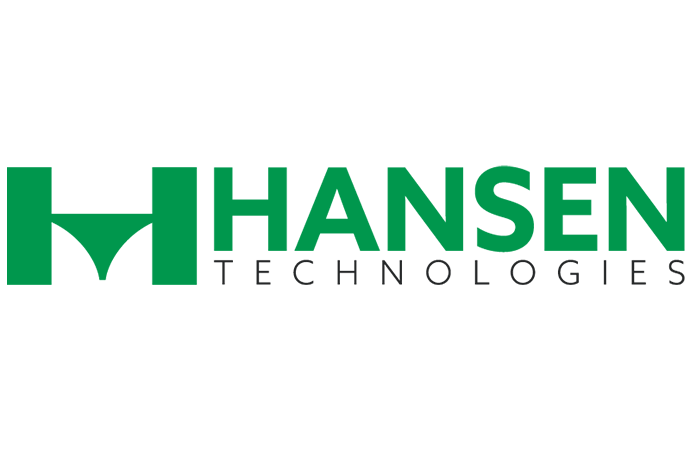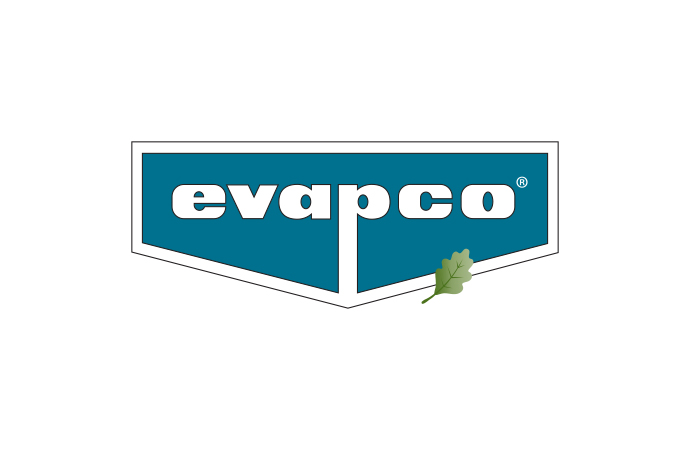The industrial refrigeration industry’s leading manufacturers, contractors, trainers and other service providers gathered in Milwaukee, US to display their products and services at the 2012 IIAR Industrial Refrigeration Conference & Exhibition, held 18 - 21 March 2012. In this first update from the event, ammonia21.com provides an overview of regulatory developments in the US with an impact on the sector, as well as the potential future role of IIAR beyond ammonia and industrial applic

Organised on an annual basis by the International Institute for Ammonia Refrigeration (IIAR), this year’s event attracted a highly qualified audience of industrial refrigeration decision makers representing firms and end user facilities from the United States (US), Canada, Mexico, Latin America, Europe, Asia and Australia.
The event had an excellent turnout, with about 1,200 participants, 100 exhibitors including ammonia21.com and 16 sponsors. The event boasted technical presentations, as well as several panel discussions.
The future of the IIAR: from NH3 industrial refrigeration to also commercial applications with all naturals?
Against the backdrop of rising interest in naturals worldwide and in North America in particular, a dedicated panel discussion explored the future role of IIAR.
The IIAR is currently considering going beyond industrial refrigeration, expanding to also cover commercial refrigeration. The institute is also looking at refrigerants beyond ammonia, namely CO2 and hydrocarbons, as well as into developing internationally, with areas such as China, India and South America being of a particular interest.
The IIAR board is looking at this future role, with the next event in 2013 expected to confirm the new direction.
Regulatory Climate: more than 4,200 new regulations in pipeline
In a keynote speech, IIAR Government Relations advocate Lowell Randel reported on the latest regulatory affairs news from Washington, including a report on the US Occupational Safety and Health Administration (OSHA) National Emphasis Program initiative.
To put things into perspective, Mr Randel started off his presentation by noting that regulatory budgets have grown 16% since 2008, while at the same time the US economy grew only 5%. Similarly Agency employment was up by 13%, while employment in the private sector shrank by over 5%. “You can tell where the Federal Government is placing their resources right now, and where the priority is: it is on the enforcement leg of the stool, and you are seeing more hiring of federal regulators”, explained Randel.
Over 4,200 new regulations are currently in the pipeline. In 2008 alone, the estimated cost of regulatory compliance was $1.75 trillion, with small businesses incurring disproportionate compliance costs (36% more per employee). As a response to increased compliance costs, in January 2011 the Obama Administration put forward Executive Order 13563: “Improving Regulation and Regulatory Review”, which is aimed at streamlining hundreds of regulations and could save $10 billion. Despite this, Mr Randel noted that increased regulatory enforcement activity can still be observed across the country.
OSHA National Emphasis Program (NEP): from pilot to national level
In November 2011, the US Occupational Safety and Health Administration (OSHA) expanded to a national level its Chemical National Emphasis Program (NEP), which establishes policies and procedures for inspecting facilities covered by OSHA's Process Safety Management (PSM) standard, such as facilities using more than 10,000 pounds of ammonia.
Both programmed and unprogrammed inspections of facilities are foreseen under the new NEP. Each OSHA area office is required to carry out 3-5 NEP programmed inspections per year, with about a quarter of these concerning ammonia facilities. Hence, “a very big piece of this programme is targeted on ammonia”, said Mr Randel.
In his presentation, Mr Randel described the different steps involved in the inspections and what facilities should expect (e.g. non-publicly disclosed dynamic list of questions). He reminded facility owners/operators to be prepared, review their PSM plans, and be ready to demonstrate both documentation and above all implementation.
Findings from Pilot NEP: ‘Mechanical Integrity’ most cited PSM element
The new programme replaced OSHA's 2009 NEP that covered selected regions around the country. Mr Randel presented findings from the pilot phase of the programme, which point to areas that could need special attention in the future. In brief:
Process Safety Management (PSM) elements most cited, included:
Workplace hazards, exposure limits and food safety
Other OSHA related issues of concern to the industrial refrigeration sector include:
Injury and Illness Prevention Program (I2P2): A proposed rule in this are is expected within 2012
Permissible Exposure Limits: Some changes are in the pipeline, with the focus being on long-term exposure? Ammonia limits are not expected to be revisited however.
Finally, Mr Randel also discussed the complexity of the Food Safety Modernisation Act that was signed into law in January 2011 and is now being implemented. Some key provisions of the Act include:
The event had an excellent turnout, with about 1,200 participants, 100 exhibitors including ammonia21.com and 16 sponsors. The event boasted technical presentations, as well as several panel discussions.
The future of the IIAR: from NH3 industrial refrigeration to also commercial applications with all naturals?
Against the backdrop of rising interest in naturals worldwide and in North America in particular, a dedicated panel discussion explored the future role of IIAR.
The IIAR is currently considering going beyond industrial refrigeration, expanding to also cover commercial refrigeration. The institute is also looking at refrigerants beyond ammonia, namely CO2 and hydrocarbons, as well as into developing internationally, with areas such as China, India and South America being of a particular interest.
The IIAR board is looking at this future role, with the next event in 2013 expected to confirm the new direction.
Regulatory Climate: more than 4,200 new regulations in pipeline
In a keynote speech, IIAR Government Relations advocate Lowell Randel reported on the latest regulatory affairs news from Washington, including a report on the US Occupational Safety and Health Administration (OSHA) National Emphasis Program initiative.
To put things into perspective, Mr Randel started off his presentation by noting that regulatory budgets have grown 16% since 2008, while at the same time the US economy grew only 5%. Similarly Agency employment was up by 13%, while employment in the private sector shrank by over 5%. “You can tell where the Federal Government is placing their resources right now, and where the priority is: it is on the enforcement leg of the stool, and you are seeing more hiring of federal regulators”, explained Randel.
Over 4,200 new regulations are currently in the pipeline. In 2008 alone, the estimated cost of regulatory compliance was $1.75 trillion, with small businesses incurring disproportionate compliance costs (36% more per employee). As a response to increased compliance costs, in January 2011 the Obama Administration put forward Executive Order 13563: “Improving Regulation and Regulatory Review”, which is aimed at streamlining hundreds of regulations and could save $10 billion. Despite this, Mr Randel noted that increased regulatory enforcement activity can still be observed across the country.
OSHA National Emphasis Program (NEP): from pilot to national level
In November 2011, the US Occupational Safety and Health Administration (OSHA) expanded to a national level its Chemical National Emphasis Program (NEP), which establishes policies and procedures for inspecting facilities covered by OSHA's Process Safety Management (PSM) standard, such as facilities using more than 10,000 pounds of ammonia.
Both programmed and unprogrammed inspections of facilities are foreseen under the new NEP. Each OSHA area office is required to carry out 3-5 NEP programmed inspections per year, with about a quarter of these concerning ammonia facilities. Hence, “a very big piece of this programme is targeted on ammonia”, said Mr Randel.
In his presentation, Mr Randel described the different steps involved in the inspections and what facilities should expect (e.g. non-publicly disclosed dynamic list of questions). He reminded facility owners/operators to be prepared, review their PSM plans, and be ready to demonstrate both documentation and above all implementation.
Findings from Pilot NEP: ‘Mechanical Integrity’ most cited PSM element
The new programme replaced OSHA's 2009 NEP that covered selected regions around the country. Mr Randel presented findings from the pilot phase of the programme, which point to areas that could need special attention in the future. In brief:
- A total of 229 “opened” inspections where carried out, out of which 173 resulted in citations,
- The total proposed violations amounted to 1,487 (average 8.4 citations per inspection), with
- The total proposed penalties amounting to $5,464,553 (average fine of $31,587)
Process Safety Management (PSM) elements most cited, included:
- Mechanical Integrity: 23%
- Process Safety Information: 21%
- Process Hazard Analysis: 16%
- Operating Procedures: 14%
- Remaining 8 elements combined: 26%
Workplace hazards, exposure limits and food safety
Other OSHA related issues of concern to the industrial refrigeration sector include:
Injury and Illness Prevention Program (I2P2): A proposed rule in this are is expected within 2012
Permissible Exposure Limits: Some changes are in the pipeline, with the focus being on long-term exposure? Ammonia limits are not expected to be revisited however.
Finally, Mr Randel also discussed the complexity of the Food Safety Modernisation Act that was signed into law in January 2011 and is now being implemented. Some key provisions of the Act include:
- Greater reporting/planning/traceability requirements
- Increased inspections
- Mandatory recalls
- Increased oversight on imports
MORE INFORMATION
Related stories








_1522327086.png)
